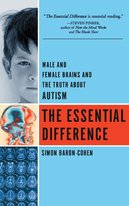|
Now is the time of the school year when those big assignments loom in front of high school and college students. For those who struggle with executive function, such as individuals with Asperger’s, autism or ADHD, getting the paper written can be especially daunting. Here are a few tips to get the assignment written. Depending on what’s keeping you from completing, or starting, the work, you may want to try just one tip, or all of them.
Organize Your Ideas Putting things on paper can make your thoughts clearer. Don’t turn this into a big additional project! Grab a scrap of paper and a pencil, and jot down phrases. Change How You’re Working Typing and handwriting utilize the brain differently. If you’re stuck in one mode, try switching to the other. Even a different pen, color of paper, or new font can help rejuvenate your work. Change Your Sensory Inputs Your surroundings can impact how well you can focus. Sometimes music can distract you just enough that your brain focuses a bit better. Or, try chewing gum or drinking water. A quiet bedroom may be too quiet, and too easy to fall asleep in. Move to the family room, the student lounge or a coffee shop. Explain Your Paper Find someone to discuss your paper with. This can be a classmate working on a similar topic, or even a friend who knows nothing about your material. Putting ideas into actual spoken words can be an effective means of getting them in order. Start with a Shorter Version Long papers can be intimidating. Just remember that even a PhD thesis is only a group of pages, written one page at a time. If the assignment is for a 20 page paper, try starting with a 5 page paper. As you work on it, new ideas will come to you and the momentum will keep things going. Another way to do this is to consider your long paper as a series of shorter papers. Devote a few pages to each idea and then put them together. Start in the Middle That first line can be the most intimidating of the whole project. You want it to grab attention, hook the reader. That can be a tough challenge when your ideas are still taking shape. So, put off that first line. Remember that you don’t have to write the paper in order. Of course you’re going to read it through to link your ideas and explain things clearly. If it’s easier to start in the middle, that’s fine. Start With a Rough Draft Managing spelling, vocabulary, grammar, writing sentences, organizing paragraphs and putting the whole project together into a brilliant composition is a lot to do a one time. It may be easier to break that down into single steps. Organize your ideas, then write the sentences, then tweak the paragraph structure, then punch up the vocabulary. Do a final check for spelling and grammar. Different parts of your brain are called into play in each task so breaking the job up can be more effective. Just Do It Finally, the best way to get that paper done is to just start it. Stop reading, stop researching, stop surfing the internet, definitely stop the video games, and just start writing. Right now! The transition from high school to adulthood is a crucial time in the lives of many young adults on the Autism Spectrum, and it requires careful planning. I encourage the families I work with to start the planning process early. Many local resources, schools and supports groups may offer information, but frequently these events are only offered annually, so parents need to start gathering information early in the high school years. Get on those email lists!
As an example, here in San Francisco’s East Bay, The Orion Academyholds a post secondary transition seminar annually in March. The Springstone School has a monthly group for parents of children transitioning from high school, which is open to all families in the community. This year the Alameda County Public Health Department held their Transition Information Faire in March. I believe planning for the next faire is underway, and it is tentatively scheduled for March of 2010. Contra Costa’s Faire was in January, 2009, and I’m not sure what their plans are for next year. One website that is useful no matter where in the country you live, is Inside College.com’s lists of Very Friendly Schools for Students with Asperger’s, and Friendly Schools for Students with Asperger’s. College is a big step, especially for those who are moving away from mom and dad, and finding an environment that offers extra support may mean the difference between success and failure. In spite of the budget cuts, there is still some good information available from government agencies. For example, here in California, the Department of Developmental Services has a number of informative and relevant links and downloads. Good career counseling is crucial for special needs individuals who are making the transition to adulthood. Individuals on the autism spectrum frequently have unique strengths and abilities, and highlighting those areas in career planning cannot be done too early. If your school doesn’t offer career planning, or they don’t seem to understand your child’s specific needs and strengths, you can find a therapist or career professional who can work with your family individually. The whole transition process requires a lot of work and advance planning, mostly by parents. But I’ve learned from my clients that it’s much tougher to catch up if the steps aren’t taken early. Please consider taking some time now to research your own child’s options. As I discussed in my previous post on managing procrastination and distraction, getting lost in the details can make it very difficult for anyone to finish, or even start, a project. For those with ASDs or ADHD, this can be even more troublesome. One technique I’ve found to be useful for many clients is to create some sort of visual plan of the project. Taking time to think about the goal, organizing the details, and jotting it down on paper will give you something to refer back to while working. Here’s an example of a simple outline you might use to stay on track while completing a project. I’ve chosen the topic I’m working on right now: writing this post. (I’m typing this for the blog, but I’d only scribble it down in real life.) Goal: Writing a Blog Post on Procrastination and Distraction 1. Reread previous post on this topic 2. Consider steps involved 3. Create examples: A. Detailed list B. Detail cloud 4. Find appropriate pictures to illustrate A. Dog B. Snack 5. Copy and paste document into blogging software 6. Create links and finalize details on blog 7. Publish Here’s an example of a less structured detail list. You can make the more important steps larger and bolder. Goal: Writing a Blog Post on Procrastination and Distraction Find Pictures Reread previous post Create examples Publish Create links Copy and paste into blogging software Plan steps involved That’s it! These are both pretty straightforward and it only took a minute or two to put them together. Now, while you’re working you’ve got a very clear idea of what you should be doing to accomplish the job. If you decide to pet the dog: or get a snack: it’s pretty clear that you’re off topic. But, I think it’s more frequent that people get pulled into the details, and then wander around off topic. Finding a picture of an apple can turn into sorting through all the pictures in the photo library, or wandering from topic to topic in an internet search. That’s where the list helps. You’ve determined the goal: writing a post, and browsing internet photos has nothing to do with that. It’s a clear example of when you need to pull yourself back to work.
If you’re more auditory than visual, recording a list can be helpful. Whatever works for you is fine, just take a few moments to plan, set a goal, and then check back with your plan frequently. Many of my clients on the autism/Asperger’s spectrum really struggle with productivity and distraction and the seemingly simple matter of getting things done. Although this is an issue for neurotypicals as well, I find that distraction and procrastination can be a lot more challenging for those on the spectrum.
Frequently, procrastination and distraction can occur when people get caught up in details and lose sight of the big picture.That’s not surprising really, because one of the key traits of both autism and Asperger’s can be, as stated in the DSM IV, a “persistent preoccupation with parts of objects.” Uta Frith refers to this “detail focus” as Weak Central Coherence. While a detail focus can result in amazing achievement and the ability to work creatively and deeply, at the same time, it can lead to lots of activity with little output. Generally, work output does require the leap from detailed focus to a more general viewpoint. Sometimes individuals can afford to take the time to study, learn, delve deeply into an idea and see where the material leads them. But often, this drifting, detailed investigation can be nothing but a waste of time. So, how do you move from the details to the big picture? With many of my clients I try to take advantage of their strength in visual processing. Create a graphic image of the project, listing all the details. Headline this image of details with a title explaining how all these terms relate. That headline is usually the big picture.The details can be organized in different ways, depending on how you think. If you’re logical and structured try creating a numbered, indented outline, with small details organized into bigger topics. If you’re more artistic than mathematical, a “detail cloud” may be more meaningful. This is similar to those keyword clouds that sometimes appear on the sidebar of blogs. Whatever you create to explain your project, put it clearly on a piece of paper where you can see it at a glance. Ask yourself frequently, “How does what I'm doing relate to what I'm trying to produce?” and “What am I trying to produce here?” Confused? An example can mean a lot more than an explanation, so please check back for the next blog posting where I'll show some examples of these techniques. Running late? Many people struggle with time management, and they’re always running late. Missing appointments, late for work, racing to get to the meeting on time. Time management is a part of executive function, something that many people struggle with. It can be especially troublesome for individuals with Autistic Spectrum Disorders (ASDs) like autism or Asperger’s, or ADHD.
How can you improve your time management and be on time? Here are some simple tips, tailored especially for individuals with ASDs or ADHD, but anyone can use them. 1. What time is it? It may seem obvious, but many people don’t know what time it is. If you’re always late, you’ve got to wear a watch, carry a cell phone with a clock, carry a pocket watch, have clocks in your home and office and get an alarm clock. And they have to be accurate, so go online and check to make sure every clock shows an accurate time. 2. What specific problem are you working on? It’s always best to solve one problem at a time. When is being late most troublesome? Let’s focus on that one situation. I’ll use getting to work on time as an example. 3. A routine can be quicker. Time management is easiest if you do the same things every day, in the same order. I know that I’m most efficient if I make espresso first, then cut up a bowl of fruit, then heat the milk for my morning latte. If I do the steps out of order I have to think about them more, I’m less efficient and it takes me more time. 4. Step by step Think about all the steps involved in your morning routine. Waking up, getting dressed, eating breakfast, your commute. You may need to be more specific. Waking up may include the alarm going off, hitting the snooze button, dozing for just nine more minutes, and then getting up for real. The more detailed your steps, the better your results, so think about this in detail. 5. Create a timed list. Take all these steps in your morning routine and list them in order. Then estimate how long each step will take. Many individuals with time management issues have a real problem here. Some people just don’t have a strong internal clock. What seems like five minutes turns out to be 20, something that should take half an hour seems to drag on all afternoon. This timed list will help you calibrate your internal ideas of time, and discover the truth about your actual morning routine. So don’t worry too much about accuracy at this point, just make your best guess of how long each step takes. 6. Test it out. Tomorrow, see how accurate your list really is. Carry it with you throughout the morning. Carry a watch as well. Keep checking with your list, noting which step you’re on, and the time. Are there any steps you missed? Don’t spend time analyzing your list right now, just try to record what you doing and what time it is. 7. Fine tune your routine. The morning rush is over, you completed the day’s work and you have some free time. Now is the time to analyze how accurate your time estimates were. Did it take as long to get dressed as you expected? You might want to repeat this exercise several to improve your accuracy. 8. Work backwards. What time do you have to be at work? Start there, at the end of your list. Working backward, and using the amounts of time it take to accomplish each task, you can figure out what time you need to start your morning routine. 9. Leave some room for error. The truth is, there’s a lot of unpredictability in some schedules, especially when you’re not in control, like during your morning commute. Most prompt people are actually a bit early much of the time. You need to consider if you absolutely need to be on time, or if it’s OK to be a bit late on those days the traffic is especially heavy, or if your dog is sick, or you knock over the carton of juice. The more trouble it is to be late, the more you’re going to have to accept getting there early most of the time. That’s it. Give your new routine a bit of time to fine tune it and see how it’s working and then move on to your next time related issue. The more you work in this way, the better you’ll get at estimating how long things take, and the better you’ll be at being on time. In my last blog post, I introduced the term executive functioning, and now I want to take the idea to a more practical level. Many of the kids I work with as a therapist struggle in the area of executive functioning, and they’ve frequently been diagnosed with specific deficits in this area. This might have been done at their school, by a psychologist or medical doctor, or at a learning center. Diagnosis can be a very helpful tool in setting up a plan to make up for any deficits, so every individual can function at the peak of their abilities.
But for adults with Autistic Spectrum Disorders (ASDs) like autism or Asperger’s, deficits in executive functioning are seldom diagnosed. Many of my adult clients don’t even have a formal ASD diagnosis, much less a specific analysis of their strengths and weaknesses. This isn’t because the deficits aren’t there, just because the diagnostic process is less rigorous and available to adults. So, if you’re an adult diagnosed or suspecting that you have an ASD, you might want to do some research into executive functioning as well. A good place to start is by carefully defining any problems you might be having. A step by step, methodical approach can work wonders. And, by taking tiny steps, the problem, which was vague and huge, becomes more manageable and the solution intuitively obvious. As an example, let’s look at a hypothetical engineer named Ed. Ed was never diagnosed with an ASD, but is pretty sure he fits the criteria for Asperger’s based on his problems with social interaction, unusual communication style, and strong interest in computer technology. Ed is very intelligent and has been quite successful professionally. More recently however, Ed has started to struggle with more work related problems and his boss never seems to be satisfied. Imagine that you’re in a situation like Ed’s. How would you deal with this problem? The first step is to consider specifically what the boss has complained about. Replay the conversations in your head and list the issues if you can. Reread your performance reviews, or any other written comments you’ve gotten. Ask a trusted colleague for input. In Ed’s case, he realized that his boss has complained repeatedly because reports have not been completed on time, he’s missed numerous line item deadlines for his main project at work, and he’s often getting to work too late. Clearly, all these issues fall under the category of deficits in time management. By redefining the problem from, “My boss hates me.” to, “I need the work on time management.” Ed can come up with specific, concrete solutions, and so can you. What can you do if you’re dealing with a similar issue? Lots of things:
And, most important, check back on this blog for more posts on managing executive functioning. How can you solve the problems you’re having at work or in your relationships? One solution might be to consider the concept of executive functioning. Executive functioning is a term that comes up frequently in discussions of the characteristics of autism, Autistic Spectrum Disorders (ASDs) and Asperger’s Syndrome. In general, many individuals with an ASD struggle with specific deficits in executive functioning as well. I don’t want to go into the details of measurement of executive functions or review the research on correlations between autism or Asperger’s and executive functioning in this posting, but I do want to introduce the basics. A good definition of “executive function” can be found in Simon Baron-Cohen’s The Essential Difference (Basic Books, 2003, p. 176). Baron-Cohen defines executive function as “shorthand for the control centers of the brain that allow not just planning but also attention-switching and the inhibition of impulsive action.” Tony Attwood discusses executive functioning in The Complete Guide to Asperger’s Syndrome (Jessica Kingsley Publishers, 2007, p. 234) and lists “organizational and planning abilities, working memory, inhibition and impulse control, self reflection and self-monitoring, time management and prioritizing, understanding complex or abstract concepts, using new strategies.” Other researchers may classify executive functions differently, but the general concept is the same.
The research on the correlation of executive functioning deficits and autism or Asperger’s can get very complex, due to the difference of ability levels along the autism spectrum, as well as the many measures of specific types of executive functions. It’s not surprising that different studies measuring executive function in individuals with autism get different results. What is clear is that individuals, both those with autism and neurotypicals, can vary in their abilities in each of the different executive functions. What’s probably of more immediate value to those with ASDs, is to individually consider the specific executive functions as Attwood lists them. For individuals who are struggling professionally or in relationships, this can be helpful as a first step in problem solving. Check back on this blog over the next few weeks. Further posts will give some examples and specific suggestions for managing problems with executive functioning. A lot of people ask me for info on support groups, social groups or discussion groups. Sometimes I can help them, especially if it’s something fairly common, like locating a parent support group for local parents with kids on the spectrum. But it seems like it gets tougher and tougher to find a group as the potential members get older. There are a lot fewer groups for teens or adults, and if the group is for multiple special issues it can really get difficult. That’s why I was pleased to find that GRASP is starting a new online discussion group for teens and adults within the GLBT community.
Please check out the GRASP website for info on their latest support group: the GRASP GLBT Network. GRASP defines this group as a “discussion group for adults and teens who are on the autism spectrum and members of the gay, lesbian, bisexual, transgender, queer, or questioning community.” Parenting kids with autism and Asperger's can be challenging, and this is especially true for couples who are no longer married. In my last post, I touched on some information regarding divorce rates, which indicated that about 30% of families with autistic children are divorced, and inthe majority of those families, the child is living with only one parent.
It's a concern that so many children are growing up without the support of both parents and that many parents are trying to carry the load on their own. One way to ease the burden of divorce and single parenting on these families could be through the Collaborative Divorce process. Today I'm interviewing JoAnn Rodrigues, MFT. JoAnn Rodrigues is a licensed Marriage and Family Therapist in San Ramon, California, as well as a Coach and Child Specialist for Collaborative Divorce. You can read more about her work on her website,http://www.joannrodriguesmft.com/. Patricia Robinson: JoAnn, can you explain Collaborative Divorce? JoAnn Rodrigues: Collaborative Divorce is an alternative to a traditionally litigated divorce. The process came about as a desire to help families navigate a difficult and often devastating event without adding more trauma. In this non-adversarial approach the couple agrees never to go to court. The family has a team of professionals: two attorneys, two coaches, a child specialist and a financial specialist who have all been trained to help the family reach a settlement that takes into account the emotional and financial needs of all the family members. The goals are to improve communication and co-parenting so that the family can reach a lasting settlement that preserves relationships rather than destroying them. In collaborative practice the control over the process lies with the couple as opposed to the court. This leads to more creativity and flexibility in all aspects of the settlement including parenting plans. This is especially important for families with special needs children as having that flexibility can greatly benefit their children. Patricia Robinson: What do you see as some of the advantages to using this process? JoAnn Rodrigues: The benefits to the family are evidenced in a reduced level of conflict, improved communication, co-parenting skills, and a better adjustment for the children. Since everyone's needs are taken into account no one leaves the process feeling like they got the short end of the stick, which only leads to continued resentment and sabotage. As therapists we are often faced with the results of a "bad divorce" where the fighting never ends. No one benefits when that happens. The financial cost when the fighting never ends can be enormous. In the collaborative process the couple has a greater initial output of money (retainers for the team members) but can save money in the long run by actively working in the team meetings to reach lasting agreements. Patricia Robinson: Can you explain your role in the Collaborative Divorce process? JoAnn Rodrigues: I have two separate roles in the collaborative process, one as a coach and one as a child specialist. I would act in only one role in each case. In my role as a coach I meet individually and in team meetings with one of the spouses. My task is to help that person identify their needs and goals as well their strengths and concerns to help support them through the process. It is different from therapy because I do not go into depth about their issues but instead help guide them and teach them skills when their issues are getting in the way of helping them achieve their goals. I do the same in the team meetings by monitoring the emotions and helping to keep the process on track. I also assist in developing a parenting plan based on the information received from the child specialist. As a child specialist I am basically making sure that the child's voice is being heard. I am assessing the child or children's adjustment to the divorce. I am looking at what they need developmentally and what is helping and what is causing distress. I am a neutral person in the process sharing the information I have gained with the parents and the team. Patricia Robinson: How do couples find a collaborative divorce team? JoAnn Rodrigues: They can go to our local website, www.collaborativepracticeeastbay.com and click on team members. They can contact any member such as myself and that person will meet with them and make suggestions for the other team members based on their needs. For people reading this outside the Bay Area they can go to the international collaborative website at www.collaborativepractice.com Patricia Robinson: Thanks JoAnn! I'm sure my readers will find this information helpful. Organization can be a big problem for kids with Asperger’s, autism and ADHD. Executive functioning difficulties can be a factor in all of these diagnoses, making it difficult for children to plan, pay attention, organize details, and manage their time.
I sat down recently with Nancy Chin of Step By Step. Nancy Chin is the developer of the Step By Step program for academic coaching. Nancy works with school age children who are typically very bright, but still struggling in school. Many of her clients have diagnoses of Asperger’s, autism and ADHD. I asked Nancy for her tips on helping kids succeed in the classroom. Nancy described how she often works with young students, those from kindergarten through third grade, directly in the classroom. After consulting with the parents and teachers, and observing her students in class, Nancy works to create detailed instructions for these children. Typically, she would start working only on one goal at a time, for example, dealing with transitions during the school day. With the student, she works to create a check list with all the steps necessary. She also explains that the routine will be the same everyday, something that these students may not realize. An example might be: When the bell rings, put your books back on the shelf, put your pencils in your backpack and get in line with the other children, trying to be in the first half of the line. Although her students are very bright, executive functioning issues mean that it can be difficult for them to figure this out without instruction. She’s found that, too often, the teacher can misunderstand and view the child as being defiant or distracted, when actually they’re just unsure what to do next. Often, with younger students she’ll create a sticker chart, sometimes using tiny prizes to help reward successes. Nancy said that her plan is to set the goals so that the students can be successful, and then to focus on the successes. She stressed that learning these skills can take time, and she likes to start working with children when they’re very young, when it can be easier for them to learn these new skills. Each small success can lead to success in other areas, for example successful transitioning from the playground gets the student to the classroom on time, which can then lead to more time for learning, and greater academic success. After achieving this first goal, Nancy said they’ll move on to another, small goal, for example, completing classroom work. This doesn’t mean that the work is all correct, but just that the student is actually doing it. By setting small goals, and focusing on the successes, the student starts to feel successful, learns how to organize and plan, and often academic performance improves. I think many children could benefit from an approach like this. It’s straightforward and simple, creates a visual plan, which is ideal for many individuals on the Autism Spectrum, and most importantly, allows the student to succeed. Nancy and I also discussed her tips for organizing homework, which I’ll be talking about in a later post. |
Patricia Robinson MFT
I'm a licensed therapist in Danville, California and a coach for Asperger's and ADHD nationwide. I work with individuals of all ages who have special needs, like Autism Spectrum Disorders, ADD, ADHD, and the family members and partners of special needs individuals. Archives
February 2015
Categories
All
|





 RSS Feed
RSS Feed